Nationality Taiwan Education High school | Role Artist Name Li Chen | |
Born 16 April 1963 (age 62) ( 1963-04-16 ) Yunlin, Taiwan | ||
Known for Sculpture, Oil painting | ||
La legerete monumentale de li chen
Li Chen or Li Zhen (李真) is a sculptor who was born in 1963 in Yunlin, Taiwan.
Contents
- La legerete monumentale de li chen
- Li chen sur la plage majestic 68
- Youth
- Making a Career of Art
- Art Series
- Exhibitions and Honors
- Discovery Channels CHINESENESS
- Solo exhibitions
- Selected International Group Exhibitions
- Reception
- Series
- Publication
- References
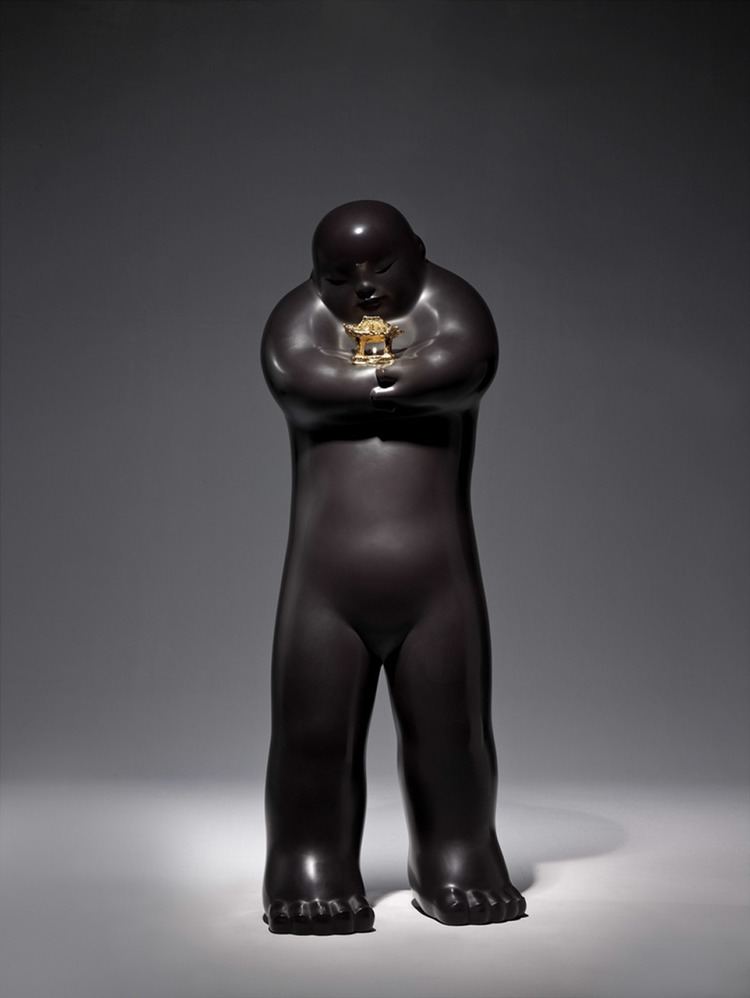
When Li Chen was first starting out and accepting projects from Buddhist shrines to produce traditional Buddha statues he studied the Buddhist and Taoist classics. However, the richness of his creative thinking led to him giving up that work and in the 1990s he began to focus on a career in art. Li’s works, which appear both classical and modern, are infused with personal sentiment and modern spirit. They give viewers a sense of life harmony and encourage people to reflect on a great many things.
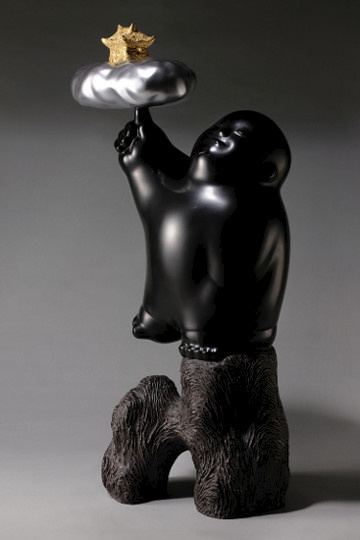
Li chen sur la plage majestic 68
Youth
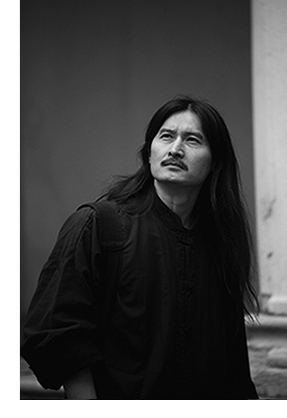
Li Chen first became interested in art at a very young age and at seven or eight delighted in playing with a paint brush. As a child he loved lying on rocks and watching the clouds float across the sky, constantly changing shape as they moved. He was also fascinated by the old walls of homes and the irregular mottling on them and at night often used a light to reflect images of his hand against the wall, intrigued by the myriad shapes he could create. At school, Li’s favorite subject was painting, which allowed his imagination to soar to new heights and enabled him to escape the restrictions imposed by his parents. When he attended National Dajia Industrial Senior High School, Li studied arts and crafts and during his six years at junior and senior-high school was influenced by such important contemporary Taiwanese artists as Chen Hsin-wan, Cheng Chiung-ming, Lee Chin-hsiu and Huang Pu-ching. Before joining Taiwan's mandatory military service, Li Chen took up a position in the workshop of renowned local sculptor Hsieh Tung-liang where he studied body sculpture.
Making a Career of Art
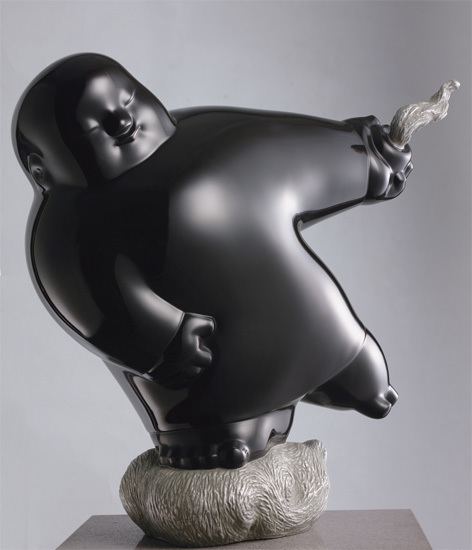
In 1987, a lay Buddhist bumped into Li Chen working in his studio and said to him: “Young man I used to paint a little myself, your realist work is really quite good, would you like to try and make a Buddha statue? I have a small Buddhist alter why not try your hand?” Li agreed right away. It was not until later that he discovered sculpting Buddha was much harder than sculpting a person. His response was to throw himself heart and soul into the study of religious art and the Buddhist classics. In between the different projects he accepted, Li Chen spent as much time as he could pursuing his own creative interests, but soon came to find sculpting Buddha statues too limiting. Li had always sought to express the creative desire that resides in the hearts of all true artists, but there was no place for such subjective thinking in his chosen profession, which is why he does not consider the pieces produced in this period to be his own creations. As a result, Li decided to focus on research. Only then was he finally able to devote his full attention to creating art, making his artistic debut in 1999.
Art Series
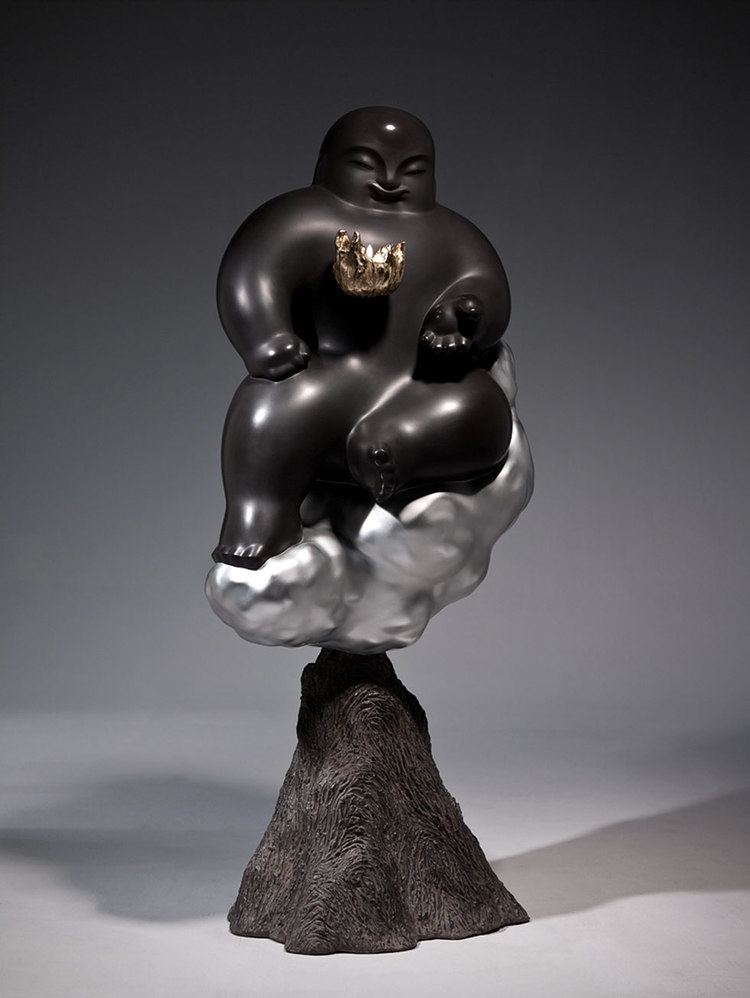
Li Chen seeks to convey the spirit and meaning of Eastern culture through sculpture. However, because expressive methods contain ideas novel to a specific time, the forms used by Buddhist sculpture for a Millennia presented a uniquely difficult obstacle, one that Li has been able to identify and overcome. Two of Li Chen’s early art series The Beauty of Emptiness and Energy of Emptiness were filled with simple minimalist lines that created an aesthetic of emptiness and reinterpreted the semiotic image of Buddha statues. At the same time, the roundness and fullness of the statues combined the Chinese philosophy of the Tao, “Qi” and energy, creating a visual tension that is both heavy and light. In the Spiritual Journey Through the Great Ether series Li Chen is already far less limited by tradition, inventing an innovative technique that incorporated gold and silver leaf on the exterior of his bronze sculptures. In contrast, Soul Guardians was inspired by the artist’s reflections on the occurrence of natural disasters over almost a decade and based on a “spiritual and philosophical interpretations of these catastrophes.” In this way, Li took the main character of a myth as his creative focus as he discussed the significance of “God” for humanity. This series conveys Li Chen’s genuine concern about the nature of society, culture and humanity, and as a result the pieces are infused with a transcendent quality. This was followed by the The Beacon: When Night Light Glimmers series, which took a “special light” as its creative core. From the use of materials to the philosophy behind the work, the idea of a “creative spark” explains Li Chen’s fascination with spiritual light and energy, and the way in which after observing culture, life and the world, he found it easier to portray Eastern humanism. In the near decades, Li Chen has spent most of the time carrying out his reflections on human nature in his creative works, thus started the Ordinary People series in 2010 that further reflected the artist's extensive spiritual contemplation. Once viewers are familiar with the ink black surface and the creative idea of lightness and weight in his works, viewing his sculptures while pursuing spiritual pleasure will become a kind of habitual response. In Ordinary People series exhibited this time, Li turned to characterize all walks of life, which sought to face the weight of reality. While Li takes pleasure in Spiritual Journey Through the Great Ether, he still returned to the most primitive mode of exploring the foundation of human nature, experiencing the virtual and inspecting the real at the same time. The 2011 series Immortality of Fate, which is one of the Li's "virtual" series, utilized wood, rope and ceramic clay to convey the artist’s awareness of the changeability of cause and effect in life. Regardless of whether these bodies are “alive” or “dead,” they record the process of corruption and decay. Facing the endless flow of history, viewers feel first hand the rise and fall of powers, cycles and perpetual change. In the same year, Li Chen also produced the Ethereal Cloud series, the first time he showed cast stainless steel pieces, which ingeniously imitated clouds and smoke. For Li, these cyclical phenomena are imbued with their own soul.
Exhibitions and Honors
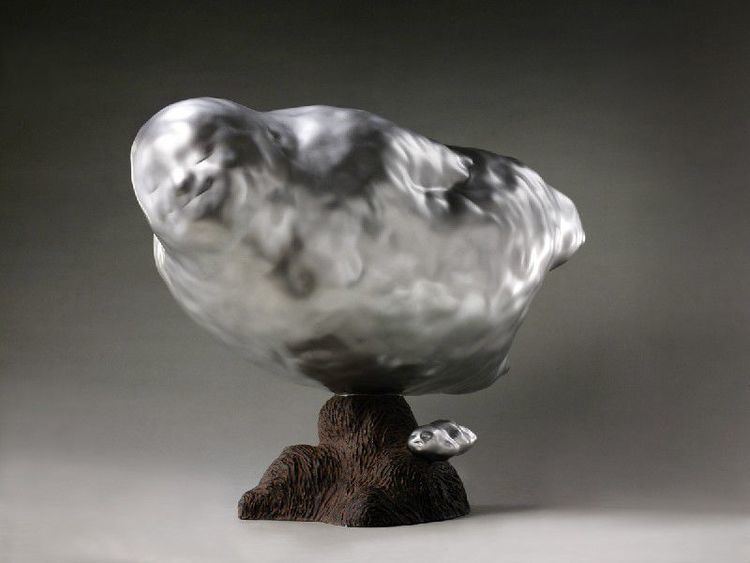
Li Chen has held a number of solo exhibitions; Openasia 2004, 7th International Exhibition of Sculptures and Installations in Venice, Italy; 2007 Venice Biennale; 2008 National Art Museum of China, Beijing; 2009 Singapore Art Museum; 2011 Art Stage Singapore and Greatness of Spirit: Li Chen Premiere Sculpture Exhibition in Taiwan, Taipei; 2012 Frye Art Museum in Seattle; Li Chen 2013 Place Vendôme Premiere Sculpture Exhibition in Paris. China in the 21st century as an emerging superpower is an incubator for the darkness of human nature; “Journey of Solitary Existence: Li Chen's ‘Ordinary People’ Series Debut Exhibition” took place in such background at Asia Art Center, Beijing in 2014-15. The audience had been familiar with the ink black surface and the creative idea of lightness and weight in Li Chen's works were touched by the portrait of human nature with great clarity in this exhibition though. A report in the January 2012 edition of “Art.Investment” magazine detailed references to Li Chen in an annual report on the international contemporary art market for 2009-2010 that appeared on “ArtPrice,” a world leader in art market information. This provided a detailed analysis and introduction: Based on total global auction house sales figures Li Chen is the sixth best selling artist in the world. In the broader rankings of contemporary artists he ranked 53rd and in the sculpture section for 2009-2010, Li was one of just two Chinese artists listed in the top 15 world sculptors along with Anish Kapoor, Jeff Koons, Subodh Gupta, Antony Gormley and Matthew Day Jackson.
Discovery Channel's "CHINESENESS"
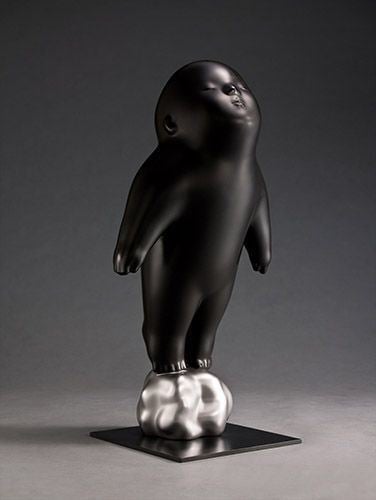
Discovery Channel witnesses the rise of Chinese in the 21st century in terms of economy, culture or even politics. Along with the rise, contemporary Chinese artists have also begun setting trends and become a new force. Discovery Channel gathers some of the most internationally recognized Chinese artists to produce Chineseness, a four-part documentary series. Each one-hour episode in Chineseness is dedicated to a different Chinese artist, who include Yang Chihung (also known as Chihung Yang) and Li Chen from Taiwan and Zhang Huan and Xu Bing from China. In the "Li Chen" episode, the dialogue between the artist and the hostess Dr. Agnes Hsu reveals Li Chen's life experiences and how it affects his social observation and creative thinking. During the one-year shooting and production the Discovery Channel's team traveled in both Asia and Europe, and the trip to Paris allowed them to document the exhibition at Place Vendôme, which is considered a milestone in the East-West cultural exchange. The series started to air from December 2013 in 28 countries or regions, including Taiwan (premiere), China, Hong Kong, Macau, Mongolia, Singapore, Malaysia, Australia, New Zealand, Korea, Thailand, Philippines, Indonesia, Vietnam, Myanmar, Brunei, Cambodia, Bangladesh, Nepal, Pakistan, Papua New Guinea, Guam, Fiji.
Solo exhibitions
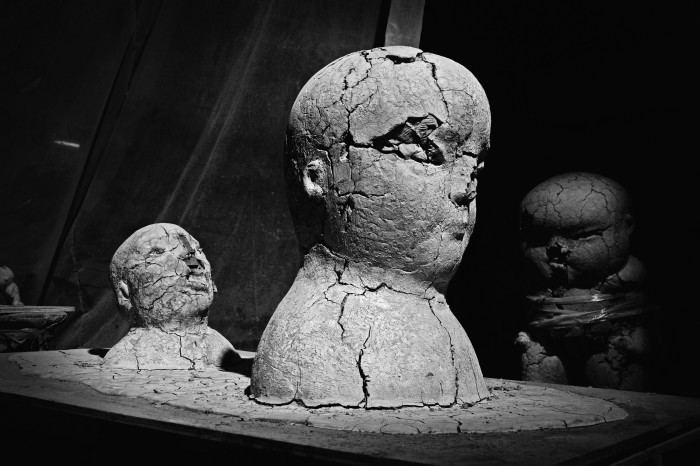
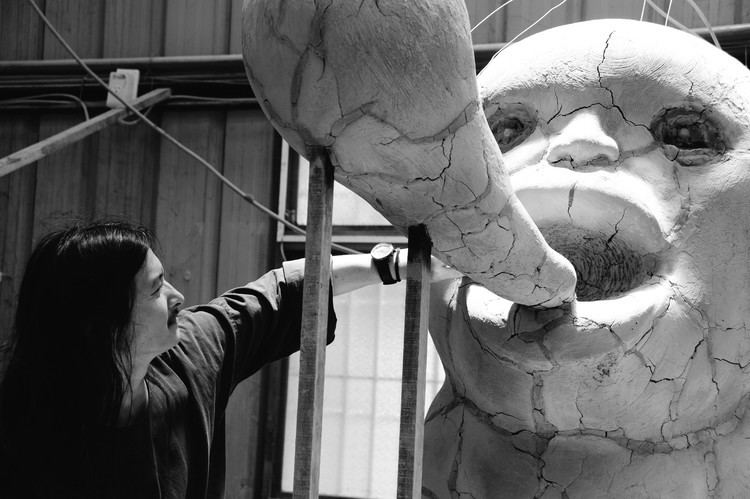
Selected International Group Exhibitions
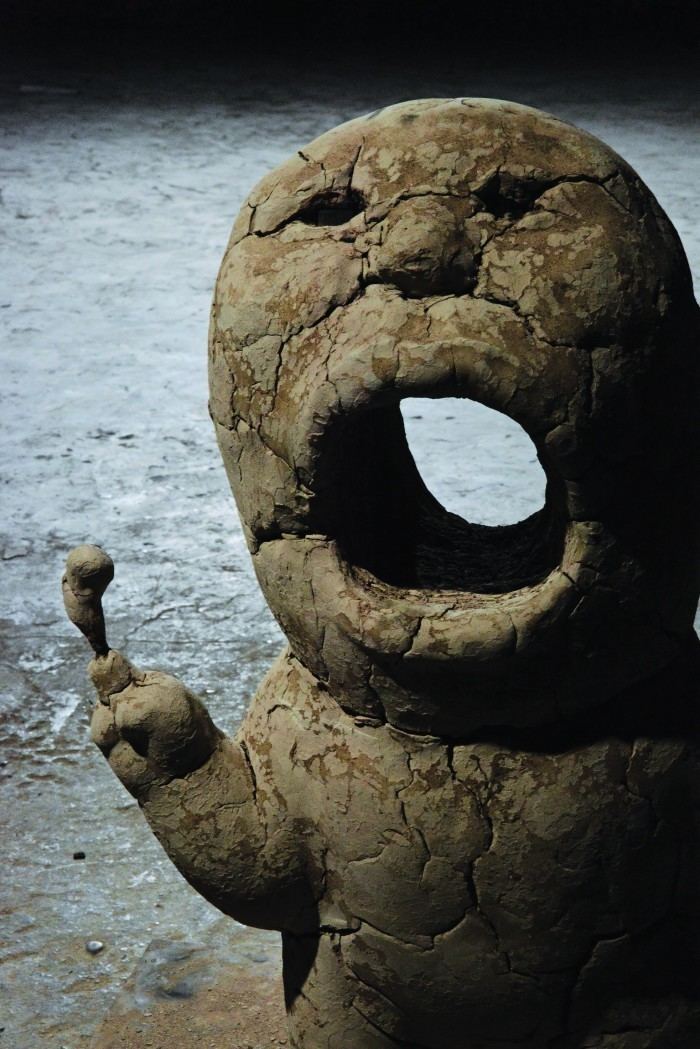
Reception
Yin Shuangxi, Professor of Central Academy of Fine Arts and the curator of the exhibition "Journey of Solitary Existence", remarked, "Characters in Li’s works wander between the heaven and the hell, which resembles the obsessed interrogations of the God and the Devil in Johann Wolfgang von Goethe’s The Tragic History of Doctor Faustus. In this way, they examine and reflect critically on the loss of the soul and morality in the current of material desires in contemporary society."
Huang Haiming, Director of Taipei Fine Arts Museum and invited scholar for Li Chen’s “Ordinary People” exhibition once said to the artist: “It seems that the realities of your living environment and cultural background provided you with exactly the right conditions needed to develop a deep understanding of social truth, power structures and the hardships of life. This allows you to observe, grasp and reflect the distorted nature of contemporary society through art. Huang also compared Li’s intent to that of realist literary giant Honoré de Balzac: “Clearly your concerns go beyond Taiwan as you have shown an interest in trends in China, including the dramatic contrast in values since the country opened to the outside world, the different conditions in which children are brought up under the one child policy and the strange character distortions to which these have given rise. This can be seen in Li Chen’s focus on society and the crafting of his major projects around the collective character of ordinary people. In many ways, this is an approach that brings to mind Balzac’s attempts to depict the diversity of society.”
Jo-Anne Birnie Danzker, Director of the Frye Art Museum in Seattle, United States, once remarked, “It has been above all the fascinating and complex cultural and sociopolitical conditions of Li Chen’s birthplace, Taiwan, that have enriched his work and imbued it with specific aesthetic characteristics, especially the presence of elements of folk culture and local religion in his work, the easy co-existence of the fine arts and craft.”
Peng Feng, Professor of Peking University and one of the curators of “The Greatness of Spirit: Li Chen Premiere Sculpture Exhibition in Taiwan” at Chiang Kai-Shek Memorial Hall in November 2011 once said, “The sculptures of Li Chen are not only a testament to the “return of beauty,” they are also an example of classic new old masters’ art, and therefore at the very forefront of contemporary artistic developments in the 21st century. It is on the basis of this determination that this paper offers an aesthetic interpretation of Li’s art.”
Kwok Kian Chow, Director of the Singapore Art Museum stated, “Seeing these tensions in the Zen philosophy context, they are about the void that is not the vacuity, and the right balance of what is intrinsic and what is transcendental, which must come into a synthesis in the viewer’s mind. “Tension” is not quite the right description of the kind of push-and-pull tussles in Li Chen sculptures, as they look completely serene and resolved, only because they stimulate the mental processes in the viewer of an animated mass between mass and void.”
Thomas Lee, President of Asia Art Center, said in Li Chen’s first catalog “Li Chen 1992-2002 Sculpture” that “Li Chen’s art allows one to sense harmony and reflect on life, and it is mischievous innocence that captures Zen spirit. Moreover, his round and complete Buddhist sculptures also enable the viewers to feel the co-existence of energy of emptiness and fullness, and the simplicity brimming with the beauty of natural style, and unprecedented visual stimulation.”
